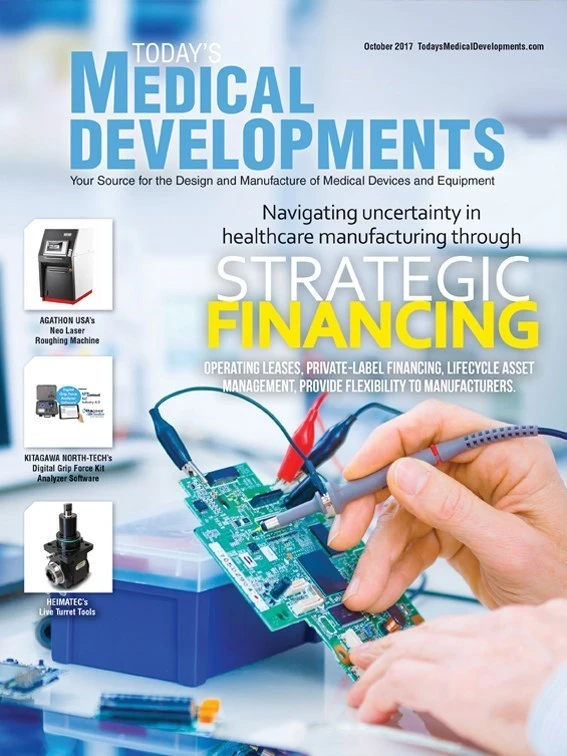
The global 3D printing medical devices market is projected to reach $1.88 billion by 2022, growing at a 17.5% compound annual growth rate (CAGR).
Technological advancements, increasing public-private funding, easy development of customized medical products, and growing applications in the healthcare industry are expected to drive market growth.
The 3D printing medical devices market is segmented into equipment, materials, software, and services, with equipment expected to grow at the highest CAGR from rising awareness and increasing adoption of 3D printing in many healthcare applications.
North America is expected to account for the largest share of the global market, while Asia-Pacific is expected to witness the highest growth to 2022.

HP, Deloitte accelerating digital transformation
HP Inc. and Deloitte Consulting LLP are collaborating to implement HP’s 3D printing systems in large-scale manufacturing environments. Their goal is to help enterprises accelerate product design and production, create more flexible manufacturing and supply chains, and enhance efficiency.
“The fourth Industrial Revolution is upon us. No sector of the global economy is undergoing more radical transformation than the $12 trillion manufacturing market,” says HP Inc. President and CEO Dion Weisler.
With the potential to lower costs, increase production speed and flexibility, minimize distribution borders, and create new markets worldwide, 3D printing is helping to unlock the promise of a new global industrial revolution.
Additively manufactured PEEK polymers progress

Research presented at the International PEEK Meeting highlights the increasing adoption of PEEK implants, the potential of carbon fiber-reinforced PEEK (CFR-PEEK) plates for fracture fixation, and how additive manufacturing (AM) is making progress in PEEK polymer-based implants.
CFR-PEEK composite plates for fracture fixation deliver high fatigue strength and a favorable modulus of elasticity. One study assessed the mechanical stability of locking screws used in CFR-PEEK proximal humerus plates compared to those used in stainless steel plates. Results indicated CFR-PEEK proximal humerus locking plates provide comparable or superior locking screw fixation strength. In addition, the CFR-PEEK plates tolerated at least an equivalent, and in some sections of the plate, a significantly greater load before failure.
Additive manufacturing delivers models that are changing pre-operative planning and surgery. For example, Apium Additive Technologies’ 3D printer, model P155, processes PEEK using fused filament fabrication (FFF) 3D printing technology. Researchers at Drexel University have used the Apium machine to print intervertebral lumbar cages with experimental PEEK-filaments. Although both compressive and compressive-shear performance still need improvement, future additive technology has the potential to match the performance characteristics of machined cages.
Get curated news on YOUR industry.
Enter your email to receive our newsletters.
Explore the October 2017 Issue
Check out more from this issue and find your next story to read.
Latest from Today's Medical Developments
- Roundup of some news hires around the manufacturing industry
- Mazak’s INTEGREX j-Series NEO Machines
- The Association for Advancing Automation (A3) releases vision for a U.S. national robotics strategy
- Mitutoyo America’s SJ-220 Surftest
- #56 - Manufacturing Matters - How Robotics and Automation are Transforming Manufacturing
- STUDER looks back on a solid 2024 financial year
- HANNOVER MESSE 2025: Tailwind for industry
- Find out the latest developments in tool path strategies for machining






